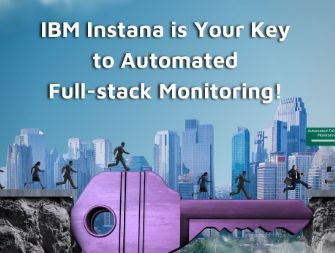August 2025 – San Jose, CA
Once upon a time, IT budgets were predictable. Then came the cloud—and with it, invoices that look more like phone books than billing statements. In 2025, Cloud Cost Management isn’t just a CFO concern—it’s a survival skill. Organizations that can’t control cloud costs risk seeing their margins vanish into the ether, quite literally.
Why It Matters Now
The cloud promised agility, scalability, and efficiency. It delivered on all three—plus a surprise: wildly variable monthly bills. According to Flexera’s State of the Cloud 2025 report, 82% of enterprises say cloud spend is their #1 financial cloud challenge (Flexera, 2025).
Common culprits include:
-
Overprovisioned resources left running.
-
Duplicate or unused instances.
-
Hidden charges from data egress, API calls, and premium features.
-
Poor visibility across multiple cloud providers.
In other words, the problem isn’t just spending too much—it’s spending without knowing where or why.
Core Principles of Cloud Cost Management
-
Visibility: Track and tag all cloud resources across environments.
-
Optimization: Rightsize instances, eliminate waste, and schedule shutdowns for unused environments.
-
Forecasting: Use historical trends to predict future spend and adjust budgets accordingly.
-
Accountability: Chargeback or showback models ensure each department owns its portion of the bill.
The Rise of FinOps
Cloud Cost Management has evolved into FinOps—a cultural and operational practice combining finance, engineering, and business teams to make data-driven spending decisions. FinOps isn’t just about cutting costs; it’s about spending smarter to drive business outcomes.
Gartner projects that by 2027, 70% of large enterprises will adopt formal FinOps practices to control multi-cloud spending (Gartner, 2025).
Tech to the Rescue
The right tools can make the difference between reactive cost control and proactive cost optimization. Platforms like CloudHealth, Apptio Cloudability, and AWS Cost Explorer provide:
-
Real-time dashboards.
-
Automated anomaly detection.
-
AI-driven recommendations for rightsizing and cost avoidance.
-
Forecasting models for budget planning.
Business Impact
-
Retail: Optimizing seasonal workloads to reduce unused compute costs after peak shopping periods.
-
Healthcare: Managing compliance-related data storage without overpaying for unused high-performance tiers.
-
SaaS Providers: Forecasting multi-region deployment costs to maintain margins while expanding globally.
According to the FinOps Foundation’s 2025 State of FinOps report, companies that adopt mature cloud cost management practices see an average 20–30% reduction in annual cloud spend (FinOps Foundation, 2025).
Challenges in Implementation
-
Cultural Resistance: Developers may see cost controls as a restriction rather than an optimization.
-
Complex Pricing Models: Each provider has its own billing quirks, making cross-cloud comparisons tricky.
-
Data Silos: Without consolidated visibility, optimization efforts remain partial and fragmented.
Looking Ahead
Expect Cloud Cost Management to become more autonomous in the next few years. AI will automatically shut down idle workloads, recommend reserved instance purchases, and even negotiate with cloud providers based on usage patterns.
We’ll also see tighter integration between Cloud Cost Management and sustainability goals—tracking carbon footprints alongside dollars spent.
Closing Thought
In the cloud era, agility without financial discipline is a recipe for budget blowouts. Cloud Cost Management ensures that your IT spending is not only efficient but strategically aligned—turning the cloud from a wildcard into a well-planned asset.
References (APA Style)
-
Flexera. (2025). State of the Cloud Report 2025. Retrieved from https://www.flexera.com
-
Gartner. (2025). Market Trends: FinOps and Cloud Cost Optimization. Retrieved from https://www.gartner.com
-
FinOps Foundation. (2025). State of FinOps Report. Retrieved from https://www.finops.org
Allan Bergman – News Article Contributor
Dallas, Texas
Peter Jonathan Wilcheck – Co-Editor
Miami, Florida
Post Disclaimer
The information provided in our posts or blogs are for educational and informative purposes only. We do not guarantee the accuracy, completeness or suitability of the information. We do not provide financial or investment advice. Readers should always seek professional advice before making any financial or investment decisions based on the information provided in our content. We will not be held responsible for any losses, damages or consequences that may arise from relying on the information provided in our content.



